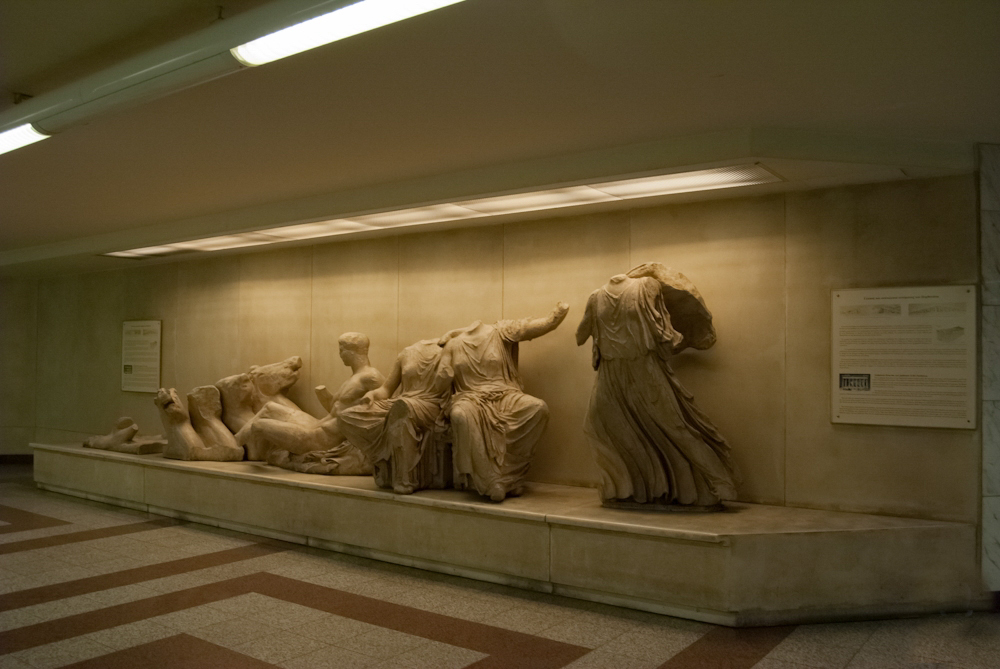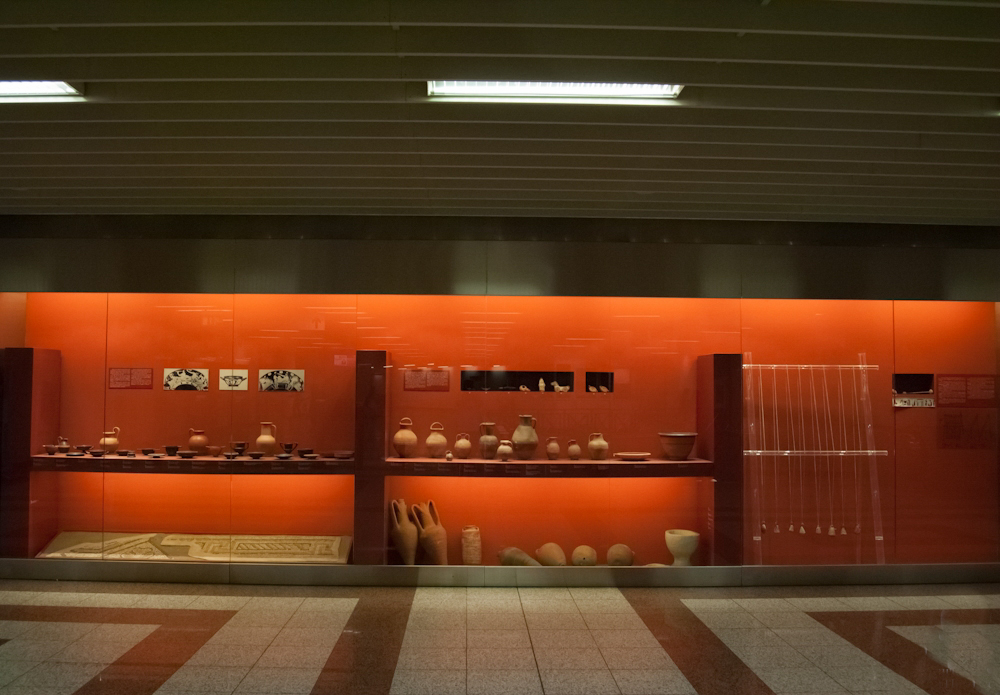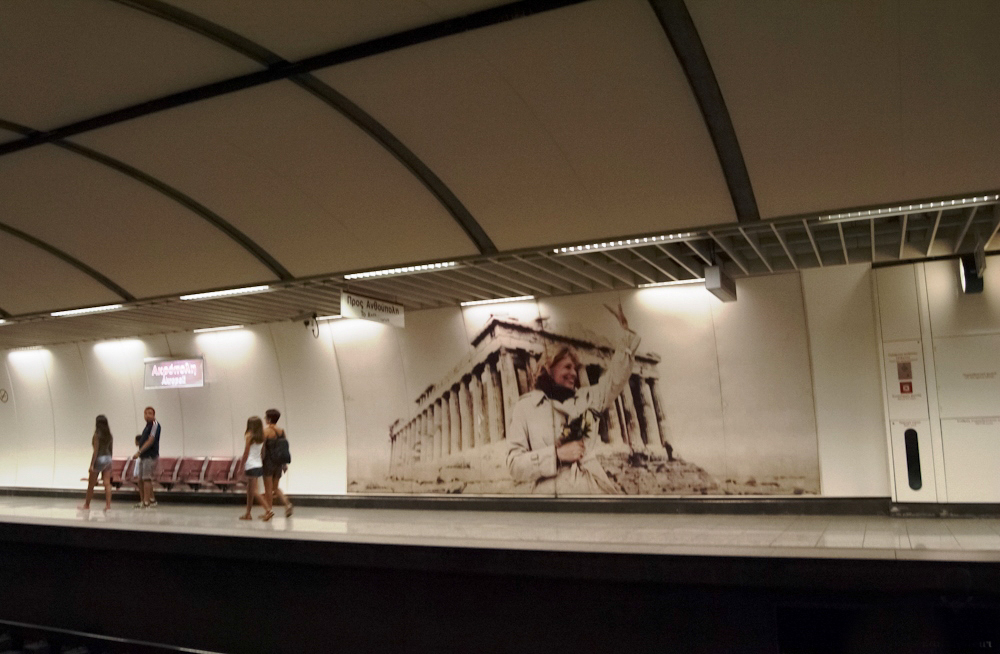Akropoli Metro Station
The architecture of the station was based on numerous archaeological findings and the Acropolis itself.
Location
Timeline
Modern and Contemporary era (1821 - )
2000 Inaugurated in November 16.

The architecture of the station was based on numerous archaeological findings and the Acropolis itself.
Home > Athens > Architecture > Metro > Line 2 > Akropoli Metro Station








The architecture of the station was based on numerous archaeological findings and the Acropolis itself. Starting from the platforms, we see the copies of the northern and the western frieze of the Parthenon (Nikos Zikos). The artistic work emphasises the motion of the depictions in the frieze while the passenger is moving, thus acquiring a sense of animation. There is as well a giant photo of Melina Merkouri with the Parthenon as a background. On the middle level, we see an enormous poster from the well with vases and other objects discovered during the works and an archaeological section (ancient road, pipeline, retaining wall and central sewer). On the first level of the transfer plattform, we see objects from children’s tombs of prehistoric times and other everyday objects from the centuries following (e.g. loom, amphoras). All findings are positioned in a way to easily catch the passenger’s attention and come with comprehensive and straightforward explanations. Otherwise, the architectural setup does not differ from other central stations.
The archaeological findings cover a time span from prehistoric times to the late Roman period. In this excavated section, chaotically positioned and architecturally plain houses and warehouses dominated. These buildings were not considered significant enough to justify redesigning the station, resulting in many of them not being preserved. If they existed today, they would have been the continuation of the findings under the Acropolis Museum and therefore the largest excavated ancient quarter in the city. Rumors within the scientific community say that the contractor threatened to delay the project while the Olympic Games were just around the corner. Regardless of what was indeed the reason, this district’s section has now disappeared.
Unsigned, (2012), Αρχαιολογική έκθεση στο σταθμό μετρό «Ακρόπολις», [Archaeological Exhibition in the metro station “Acropolis”], Odysseus, Ministry of Culture,
http://odysseus.culture.gr/h/1/gh151.jsp?obj_id=3363
Last visit: 25/8/2015
Inscriptions in metro area
Field observation by scientific editors
2000 Inaugurated in November 16.
Share